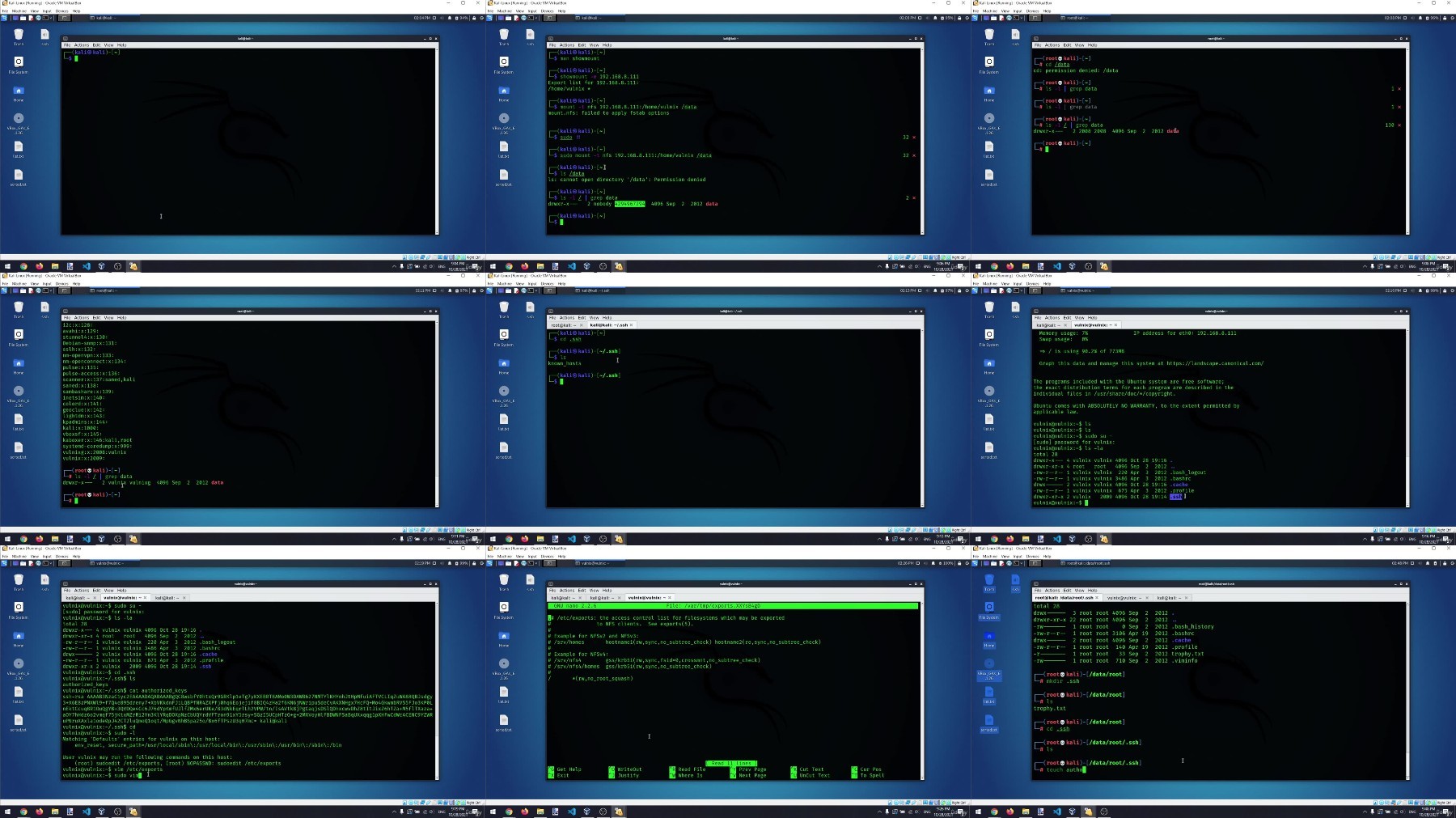
Use Kali Linux Like A Hacker With Red Team Tactics
Published 3/2023
MP4 | Video: h264, 1280x720 | Audio: AAC, 44.1 KHz
Language: English
| Size: 3.17 GB[/align]
| Duration: 5h 21m
Learn Ethical Hacking and Start your Career in Cyber Security
[b]What you'll learn[/b]
What is Cyber Security ?
Kali Linux Command Line (CLI)
Wireshark
Passive Information Gathering Techniques
Scanning with Nmap
The Metasploit Framework Essentials
Active Directory Attacks
Basic Linux Commands
Netcat (nc) Essentials
Bash Scripting (Shell Scripting)
Active Information Gathering Techniques
Web Application Attacks
Buffer Overflow
Hands-On Practice Labs
[b]Requirements[/b]
Nothing just Patience and Eager to Learn !
[b]Description[/b]
What is ethical hacking?Ethical hacking involves an authorized attempt to gain unauthorized access to a computer system, application, or data. Carrying out an ethical hack involves duplicating strategies and actions of malicious attackers. This practice helps to identify security vulnerabilities which can then be resolved before a malicious attacker has the opportunity to exploit them.Also known as "white hats," ethical hackers are security experts that perform these assessments. The proactive work they do helps to improve an organization's security posture. With prior approval from the organization or owner of the IT asset, the mission of ethical hacking is opposite from malicious hacking.What Is A Red Team?A red team consists of security professionals who act as adversaries to overcome cyber security controls. Red teams often consist of independent ethical hackers who evaluate system security in an objective manner.They utilize all the available techniques to find weaknesses in people, processes, and technology to gain unauthorized access to assets. As a result of these simulated attacks, red teams make recommendations and plans on how to strengthen an organization's security posture.How Does A Red Team Work?You might be surprised to learn that red teams spend more time planning an attack then they do performing attacks. In fact, red teams deploy a number of methods to gain access to a network.Social engineering attacks, for example, rely on reconnaissance and research to deliver targeted spear phishing campaigns. Likewise, prior to performing a penetration test, packet sniffers and protocol analyzers are used to scan the network and gather as much information about the system as possible.What Is A Blue Team?A blue team consists of security professionals who have an inside out view of the organization. Their task is to protect the organization's critical assets against any kind of threat.They are well aware of the business objectives and the organization's security strategy. Therefore, their task is to strengthen the castle walls so no intruder can compromise the defenses.How Does A Blue Team Work?The blue team first gathers data, documents exactly what needs to be protected and carries out a risk assessment. They then tighten up access to the system in many ways, including introducing stronger password policies and educating staff to ensure they understand and conform to security procedures.Monitoring tools are often put in place, allowing information regarding access to the systems to be logged and checked for unusual activity. Blue teams will perform regular checks on the system, for example, DNS audits, internal or external network vulnerability scans and capturing sample network traffic for analysis.
Overview
Section 1: Introduction
Lecture 1 What is Ethical Hacking
Lecture 2 Red Team Vs Blue Team
Lecture 3 Why Kali Linux ?
Section 2: Getting Started with Kali Linux
Lecture 4 Booting Up Kali Linux
Lecture 5 The Linux Filesystem
Lecture 6 Basic Linux Commands
Lecture 7 Managing Kali Linux Services
Lecture 8 Searching, Installing, and Removing Tools
Section 3: Kali Linux Command Line (CLI)
Lecture 9 Environment Variables
Lecture 10 Bash History Command
Lecture 11 Piping and Redirection
Lecture 12 Text Searching and Manipulation
Lecture 13 Editing Files
Lecture 14 Comparing Files
Lecture 15 Managing Processes
Lecture 16 File and Command Monitoring
Lecture 17 Downloading Files
Lecture 18 Customizing the Bash Environment
Section 4: Netcat (nc) Essentials
Lecture 19 Netcat (nc)
Section 5: Wireshark
Lecture 20 What is Wireshark and why should you learn it?
Lecture 21 Basics of Computer Networking
Lecture 22 OSI model
Lecture 23 Install Wireshark
Lecture 24 WireShark Getting Started
Lecture 25 Sets a conversation filter between two specific IP addresses
Lecture 26 Sets a filter to display all http and dns protocols
Lecture 27 Sets filters for any TCP packet with a specific source or destination port
Lecture 28 displays all TCP packets that contain a certain term
Lecture 29 filters all HTTP GET and POST requests
Lecture 30 filter out certain types of protocols
Lecture 31 Can Wireshark capture passwords?
Lecture 32 Plain text network protocols
Lecture 33 Capture Insecure Connections (Net Cat)
Lecture 34 Capture FTP Passwords
Lecture 35 Extract files from FTP using Wireshark
Lecture 36 Capture HTTP Passwords
Lecture 37 Capture files (images) from HTTP traffic
Section 6: Bash Scripting (Shell Scripting)
Lecture 38 Our First Bash Script
Lecture 39 Variables
Lecture 40 If, Else, Elif Statements
Lecture 41 Loops
Lecture 42 Functions
Section 7: Passive Information Gathering Techniques
Lecture 43 What is Passive Information Gathering
Lecture 44 Whois Enumeration
Lecture 45 Google Hacking
Lecture 46 Netcraft
Lecture 47 Shodan
Lecture 48 Security Headers Scanner
Lecture 49 Email Harvesting
Lecture 50 Information Gathering Frameworks
Section 8: Active Information Gathering Techniques
Lecture 51 DNS Introduction
Lecture 52 DNS Enumeration
Section 9: Scanning with Nmap
Lecture 53 Port Scanners Essentials
Lecture 54 What is Nmap
Lecture 55 Preparing the Environment
Lecture 56 UDP Scan (-sU)
Lecture 57 FIN Scan (-sF)
Lecture 58 Ping Scan (-sP)
Lecture 59 TCP SYN Scan (-sS)
Lecture 60 TCP Connect() Scan (-sT)
Lecture 61 Version Detection (-sV)
Lecture 62 Idle Scan (-sI)
Lecture 63 Basic Nmap Scan against IP or host - Hands On
Lecture 64 Nmap Ping Scan - Hands On
Lecture 65 Scan specific ports or scan entire port ranges - Hands On
Lecture 66 Scan multiple IP addresses - Hands On
Lecture 67 Scan the most popular ports - Hands On
Lecture 68 Scan hosts and IP addresses reading from a text file - Hands On
Lecture 69 Save your Nmap scan results to a file - Hands On
Lecture 70 Disabling DNS name resolution - Hands On
Lecture 71 Scan + OS and service detection with fast execution - Hands On
Lecture 72 Detect service/daemon versions - Hands On
Lecture 73 Scan using TCP or UDP protocols - Hands On
Lecture 74 What is NSE ?
Lecture 75 CVE detection using Nmap - Theory
Lecture 76 CVE detection using Nmap - Hands On
Lecture 77 Launching DOS with Nmap - Hands On
Lecture 78 Launching brute force attacks - Hands On
Lecture 79 Detecting malware infections on remote hosts - Hands On
Section 10: Web Application Attacks
Lecture 80 Web Application Security
Lecture 81 Web Application Assessment Tools - DIRB
Lecture 82 Web Application Assessment Tools - Burp Suite
Lecture 83 Web Application Assessment Tools - Nikto
Lecture 84 Open Web Application Security Project Top 10 (OWASP Top 10)
Section 11: The Metasploit Framework Essentials
Lecture 85 Basics of Metasploit Framework
Lecture 86 Metasploit User Interfaces and Setup
Lecture 87 Getting Familiar with MSF Syntax
Lecture 88 Metasploit Database Access
Lecture 89 Auxiliary Modules
Lecture 90 Metasploit Payloads - Meterpreter Payloads
Section 12: Hands-On Practice Lab 1
Lecture 91 Hands-On Practice Lab 1 Links
Lecture 92 Setup the Environment
Lecture 93 Hands-On Practice Lab 1 Walkthrough
Section 13: Hands-On Practice Lab 2
Lecture 94 Hands-On Practice Lab 2 Links
Lecture 95 Setup the Environment
Lecture 96 Hands-On Practice Lab 2 Walkthrough
Section 14: Hands-On Practice Lab 3
Lecture 97 Hands-On Practice Lab 3 Links
Lecture 98 Setup the Environment
Lecture 99 Hands-On Practice Lab 3 Walkthrough
Ethical Hackers,Cyber Security Engineers,DevSecOps Engineers,System Administrator,IT Engineers
https://fikper.com/MXkrKaZUGP/Udemy_Use_Kali_Linux_like_a_hacker_with_Red_Team_Tactics_2023-3.part1.rar.html https://fikper.com/IPjHWxjn9q/Udemy_Use_Kali_Linux_like_a_hacker_with_Red_Team_Tactics_2023-3.part2.rar.html https://fikper.com/I3SXgkJxyk/Udemy_Use_Kali_Linux_like_a_hacker_with_Red_Team_Tactics_2023-3.part3.rar.html
https://rapidgator.net/file/c620adccc2c5060b957884f084a9b128/Udemy_Use_Kali_Linux_like_a_hacker_with_Red_Team_Tactics_2023-3.part1.rar https://rapidgator.net/file/4a7a40f86fddfe716a66156f33512bc7/Udemy_Use_Kali_Linux_like_a_hacker_with_Red_Team_Tactics_2023-3.part2.rar https://rapidgator.net/file/adbb506885739[цензура]6f1c529879ce352a/Udemy_Use_Kali_Linux_like_a_hacker_with_Red_Team_Tactics_2023-3.part3.rar

https://katfile.com/op0xhb911xfp/Udemy_Use_Kali_Linux_like_a_hacker_with_Red_Team_Tactics_2023-3.part1.rar https://katfile.com/sncf0cl44kv2/Udemy_Use_Kali_Linux_like_a_hacker_with_Red_Team_Tactics_2023-3.part2.rar https://katfile.com/9cwxp1mnfaqk/Udemy_Use_Kali_Linux_like_a_hacker_with_Red_Team_Tactics_2023-3.part3.rar
Free search engine download скачать: Udemy Use Kali Linux like a hacker with Red Team Tactics 2023-3

